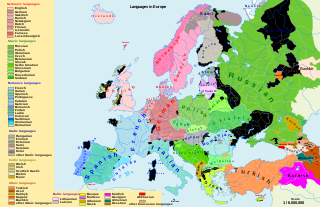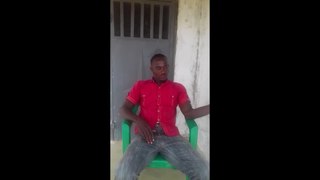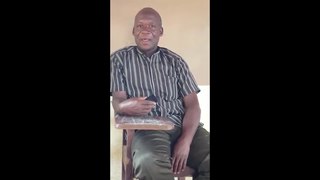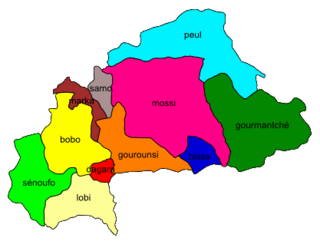Related Research Articles

There are over 250 languages indigenous to Europe, and most belong to the Indo-European language family. Out of a total European population of 744 million as of 2018, some 94% are native speakers of an Indo-European language. The three largest phyla of the Indo-European language family in Europe are Romance, Germanic, and Slavic; they have more than 200 million speakers each, and together account for close to 90% of Europeans.
Luhya is a Bantu language of western Kenya.
Bozo is a Mande language spoken by the Bozo people of the Inner Niger Delta in Mali. For Fishing, many Bozo are also found in other West African countries where there are Rivers and Dams, such as Nigeria, Burkina Faso and the Ivory Coast. According to the 2000 census, the Bozo people number about 132,100. Bozo is considered a dialect cluster, but there is a quite a bit of diversity. Ethnologue recognises four languages on the basis of requirements for literacy materials. Bozo is part of the northwestern branch of the Mande languages; the closest linguistic relative is Soninke, a major language spoken in the northwestern section of southern Mali, in eastern Senegal, and in southern Mauritania. The Bozo often speak one or more regional languages such as Bambara, Fula, or Western Songhay. The language is tonal, with three lexical tones.

The Kpelle language is spoken by the Kpelle people of Liberia, Guinea and Ivory Coast and is part of the Mande language family. Guinean Kpelle, spoken by half a million people, is concentrated primarily, but not exclusively, in the southeastern forest regions of Guinea bordering Liberia, Ivory Coast, and Sierra Leone. Half a million Liberians speak Liberian Kpelle, which is taught in Liberian schools.

Dan is a Southern Mande language spoken primarily in Ivory Coast and Liberia. There is also a population of about 800 speakers in Guinea. Dan is a tonal language, with 9 to 11 contour and register tones, depending on the dialect.
Busa, or Bisã, is the Mande language of the former Borgu Emirate in northwestern Nigeria and northern Benin. It is called Busanci in Hausa, and has also been called Zugweya.

Samo, also known as Mande Samo, is a dialect cluster of Niger-Congo languages spoken in Burkina Faso and Mali.
Guro (Gouro), also known as Kweni (Kwéndré) and Lo, is a Southern Mande language spoken by approximately a million people in Ivory Coast, primarily in the areas of Haut-Sassandra and Marahoue, and the Goh.
Yaure is a Mande language of Ivory Coast. Dialects are Klan, Yaan, Taan, Yoo, Bhoo.
Mwan is a Mande language of Ivory Coast.
Wan, or Nwa, is a Mande language of Ivory Coast. Dialects are Miamu and Kemu.
Gban, or Gagu (Gagou), is a Mande language of Ivory Coast. Dialects are N’da, Bokwa, Bokabo, Tuka.
Boko, or Boo, is a Mande language of Benin and Nigeria.
Kyenga, is a Mande language of Nigeria and Benin. Usage is declining, and the Kyenga are shifting to Hausa in Nigeria and Dendi in Benin.
Jeri is a cover term for two Mande language of northwestern Ivory Coast and southwestern Burkina Faso. The two had been thought until recently to be dialects of a single language, but they are now known to be clearly distinct. The Burkina language is Jalkunan, and the Ivory Coast language is Jeri Kuo. Jeri Kuo is spoken by people who traditionally constituted a caste-like minority within an otherwise mostly Senufo-speaking zone. The language is thought to be endangered, with 90% of ethnic Jeri having shifted to regionally dominant languages. The Jalkunan-speaking people of the Blédougou village cluster are not people of caste, although nearby villages of other ethnicities have entire sections populated by blacksmith and leatherworker castes. Jalkunan is being replaced by Jula (Dioula), but it is not immediately threatened by extinction.
Djimini (Jinmini) is a southern Senufo language of Ivory Coast. Blacksmiths among the Djimini once spoke Tonjon, a Mande language.
Banka, or Bankagooma, is a minor Mande language of Mali. There is a reasonable degree of mutual intelligibility with Duun.
Mixifore, or Mogofin, is a minor Mande language of Guinea.
Kakabe is a Mande language of Guinea. The speakers of the Kakabe language reside in the Futa-Jallon plateau which is located in Guinea. Kakabe belongs to the Mokole group, which is the closest group to the Manding people in terms of culture and language. The language is spoken in a number of villages that are situated on the Futa-Jallon plateau in Guinea.
The Kpee language, Kpeego, commonly called Numu (Noumoukan), is a Mande language spoken by blacksmiths (numu) in Burkina Faso. It is thought to be similar to Ligbi in Ghana, but no comparison has been done.
References
- ↑ Beng at Ethnologue (18th ed., 2015) (subscription required)
Ngen at Ethnologue (18th ed., 2015) (subscription required)